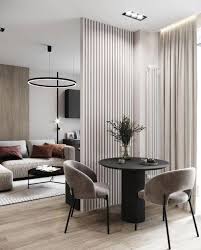In today’s fast-paced world, our living and working spaces have become more than just physical environments—they are reflections of our personalities, values, and lifestyles. Whether it’s a cozy apartment, a luxurious villa, or a modern office, the way a space is designed can profoundly affect how we feel and function within it. This is where an interior designer steps in, turning walls and floors into inspiring experiences.
Who Is an Interior Designer?
An interior designer is a professional who specializes in enhancing the aesthetics, functionality, and atmosphere of indoor spaces. Unlike simple decoration, interior design is a balance between creativity and practicality. Designers carefully plan layouts, select colors, choose furniture, and incorporate textures, lighting, and décor elements to create spaces that are both beautiful and functional.
Interior designers also collaborate with architects, contractors, and homeowners to ensure that a project aligns with the client’s vision while meeting safety and structural requirements.
Why Hire an Interior Designer?
Many people wonder if hiring an interior designer is necessary, especially with countless DIY videos and online resources available. However, a professional designer brings unique expertise and advantages that go beyond surface-level aesthetics:
1. Expert Knowledge
Interior designers understand design principles, color psychology, lighting techniques, and space optimization strategies. Their trained eye can spot opportunities and challenges that non-professionals might miss.
2. Personalized Designs
Rather than offering generic solutions, a designer tailors the project to reflect your personal style and functional needs. Whether you prefer modern minimalism, rustic charm, or luxury elegance, the result is a custom design unique to you.
3. Efficient Use of Space
A skilled designer ensures that every inch of your space serves a purpose. This is especially important in smaller apartments or offices where functionality is key.
4. Access to Resources
Designers often have access to exclusive furniture suppliers, high-quality materials, and unique décor items that are not always available in retail stores.
5. Cost and Time Savings
While hiring a designer may seem like an added expense, it often saves money in the long run. Mistakes such as buying oversized furniture or choosing the wrong color palette can be costly. Designers streamline the process, preventing errors and ensuring timely completion.
Key Services Offered by Interior Designers
An interior designer provides a wide range of services depending on the client’s needs. These include:
-
Space Planning: Determining the best layout for furniture and functional zones.
-
Concept Development: Creating a cohesive design theme based on client preferences.
-
Color Consultation: Choosing palettes that enhance mood and aesthetics.
-
Lighting Design: Selecting fixtures and placements to create ambiance.
-
Furniture Selection: Recommending pieces that balance comfort, beauty, and functionality.
-
Material & Finishes Selection: Guiding clients on flooring, wall treatments, fabrics, and textures.
-
Project Management: Coordinating contractors, timelines, and budgets.
Residential vs. Commercial Interior Designers
Interior designers often specialize in different sectors:
-
Residential Designers: Focus on homes, apartments, and villas. Their goal is to create comfortable, stylish living environments that reflect personal taste.
-
Commercial Designers: Work on offices, retail shops, restaurants, hotels, and other commercial spaces. These projects emphasize functionality, branding, and customer experience.
The Design Process
The journey of working with an interior designer typically follows these steps:
-
Consultation – Understanding the client’s needs, preferences, and budget.
-
Concept Development – Creating mood boards and sketches to visualize ideas.
-
Space Planning – Mapping out layouts that maximize efficiency.
-
Material & Color Selection – Choosing finishes, fabrics, and tones.
-
Execution – Coordinating with contractors, overseeing installations, and ensuring quality.
-
Final Styling – Adding décor, artwork, and accessories to complete the look.
Trends in Modern Interior Design
Interior design is constantly evolving, influenced by global lifestyles and innovations. Some current trends include:
-
Minimalism: Clean lines, neutral colors, and clutter-free spaces.
-
Sustainable Design: Eco-friendly materials, recycled furniture, and energy-efficient lighting.
-
Smart Homes: Integration of technology with automated lighting, climate control, and security.
-
Biophilic Design: Incorporating natural elements like indoor plants, wood textures, and open spaces.
-
Bold Colors and Patterns: Statement walls, vibrant furniture, and artistic décor pieces.
Why Interior Designers Are Essential in Dubai
Cities like Dubai, known for their luxury and innovation, have heightened the importance of professional interior design. With its blend of traditional Arabic culture and modern skyscrapers, Dubai demands designs that reflect both heritage and contemporary sophistication.
Interior designers in Dubai not only focus on creating luxurious and stylish homes but also cater to the fast-paced commercial sector, ensuring that businesses stand out with impressive office and retail designs.
Conclusion
An interior designer is much more than a decorator—they are visionaries who transform ordinary spaces into extraordinary experiences. By blending art, science, and functionality, they create environments that reflect personality, inspire productivity, and elevate comfort.
Whether you’re redesigning your home, setting up a new office, or simply refreshing a room, working with a professional designer ensures a result that is stylish, functional, and timeless.

